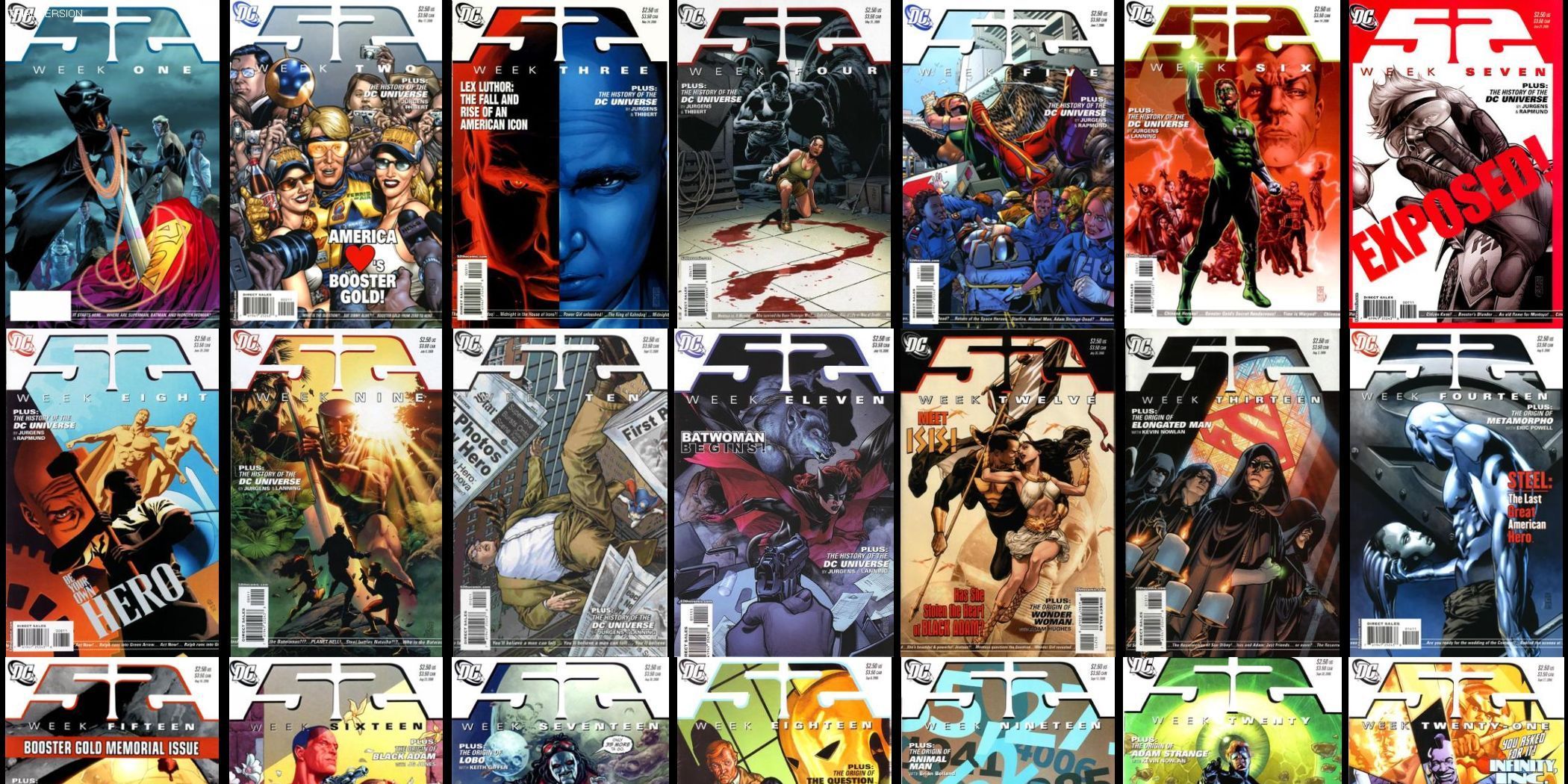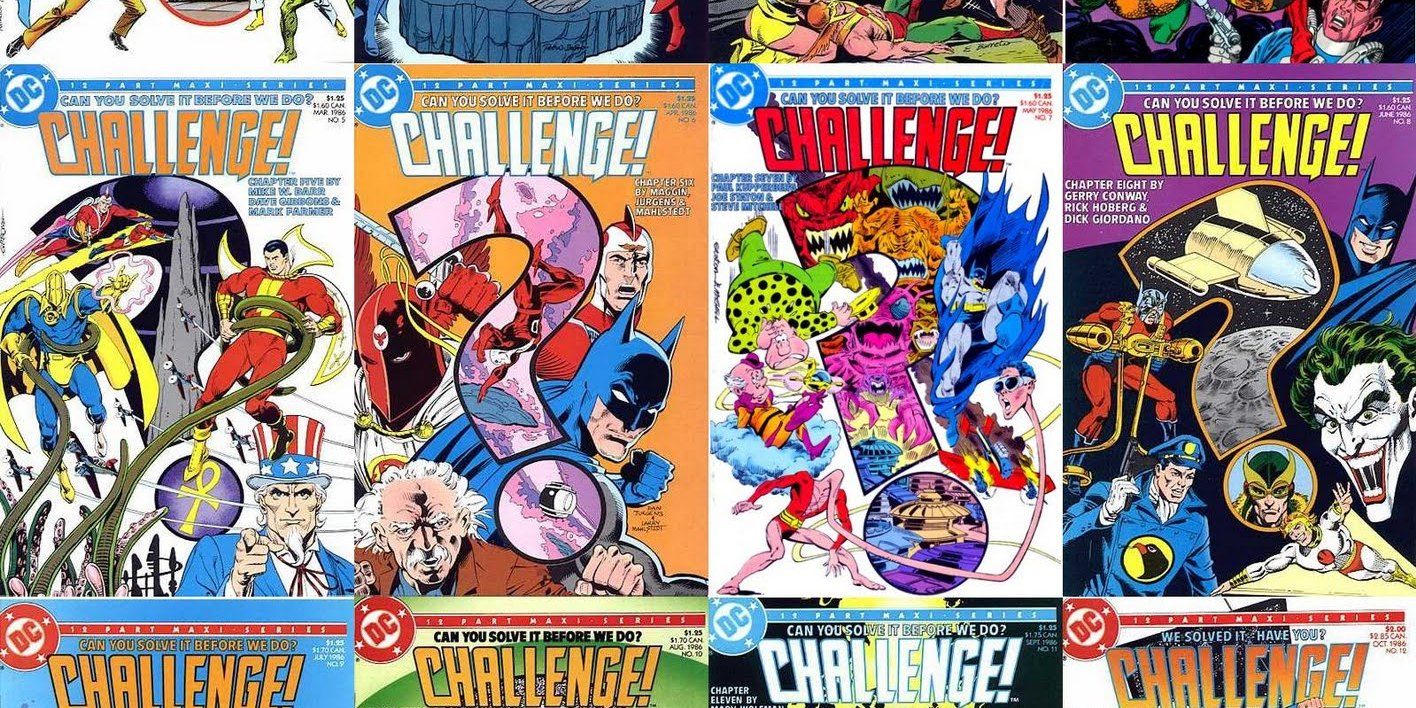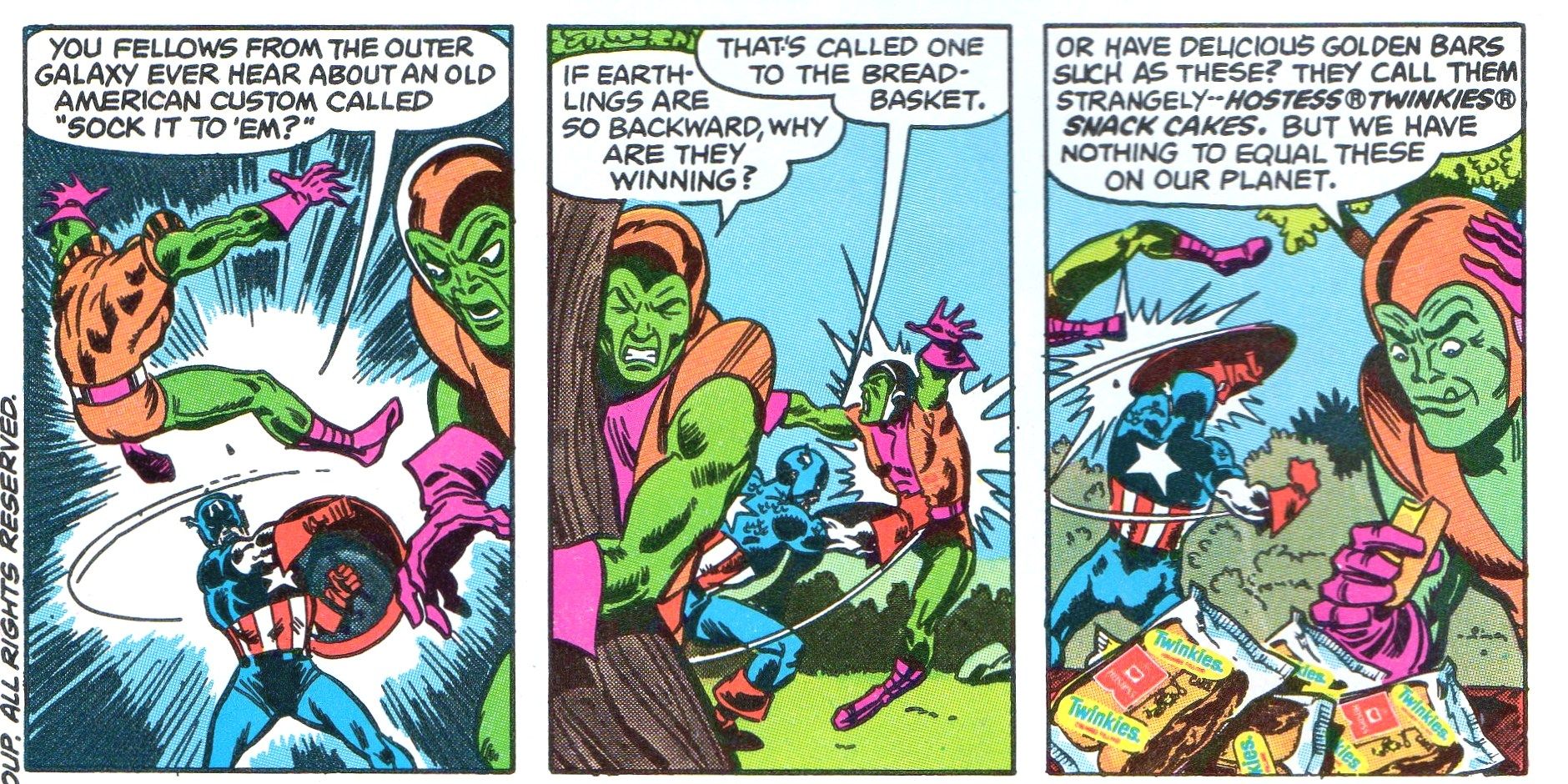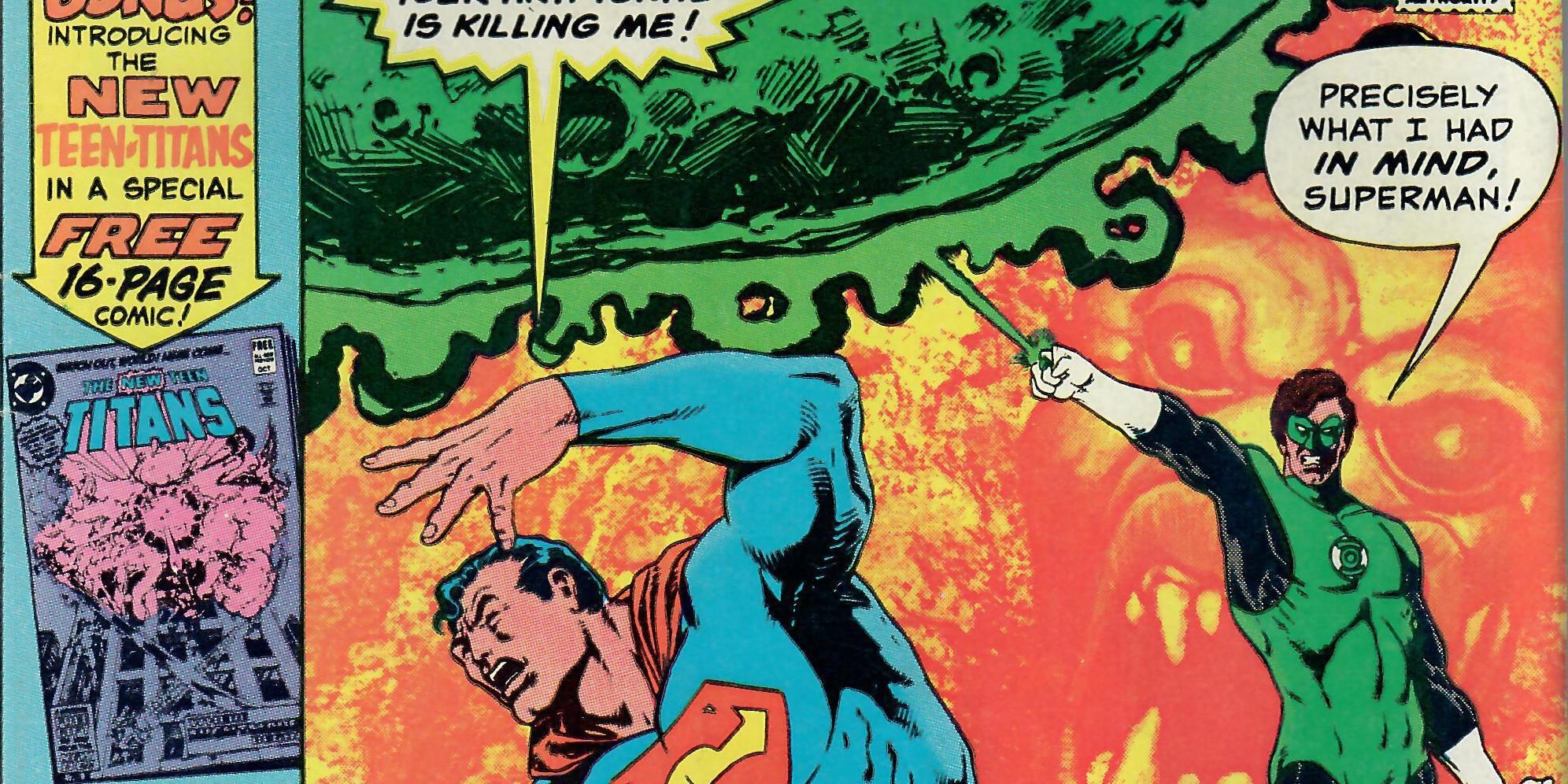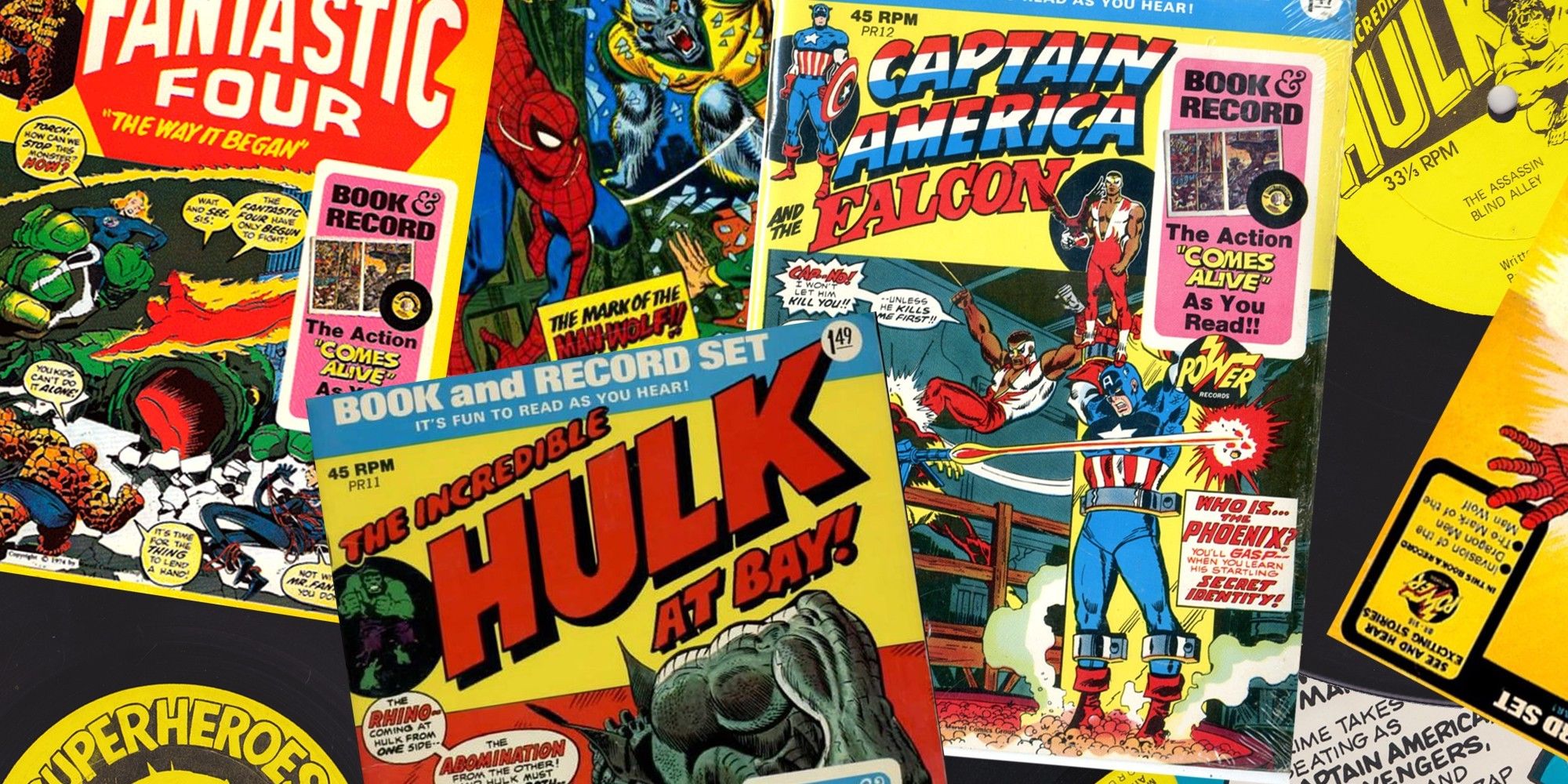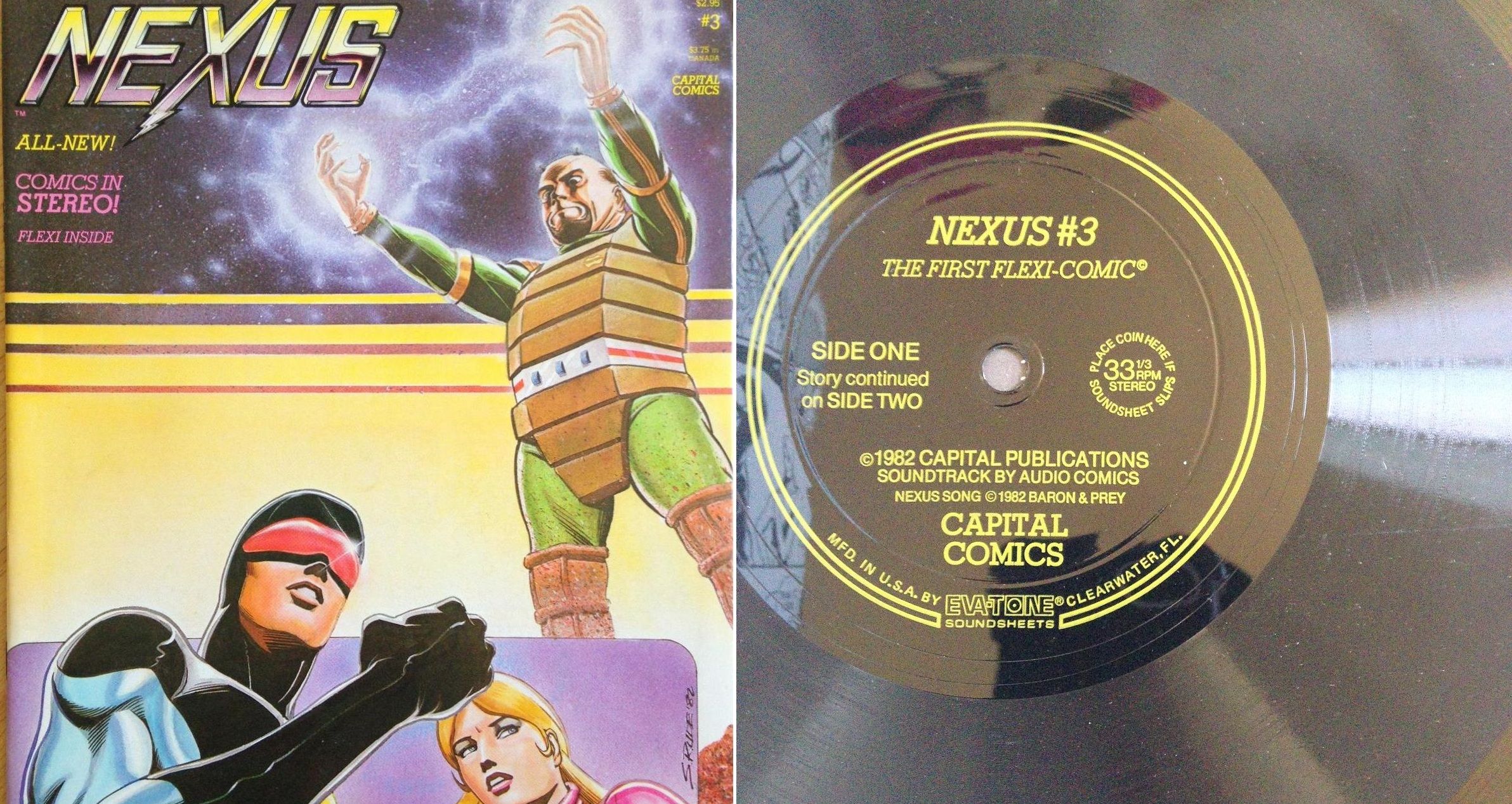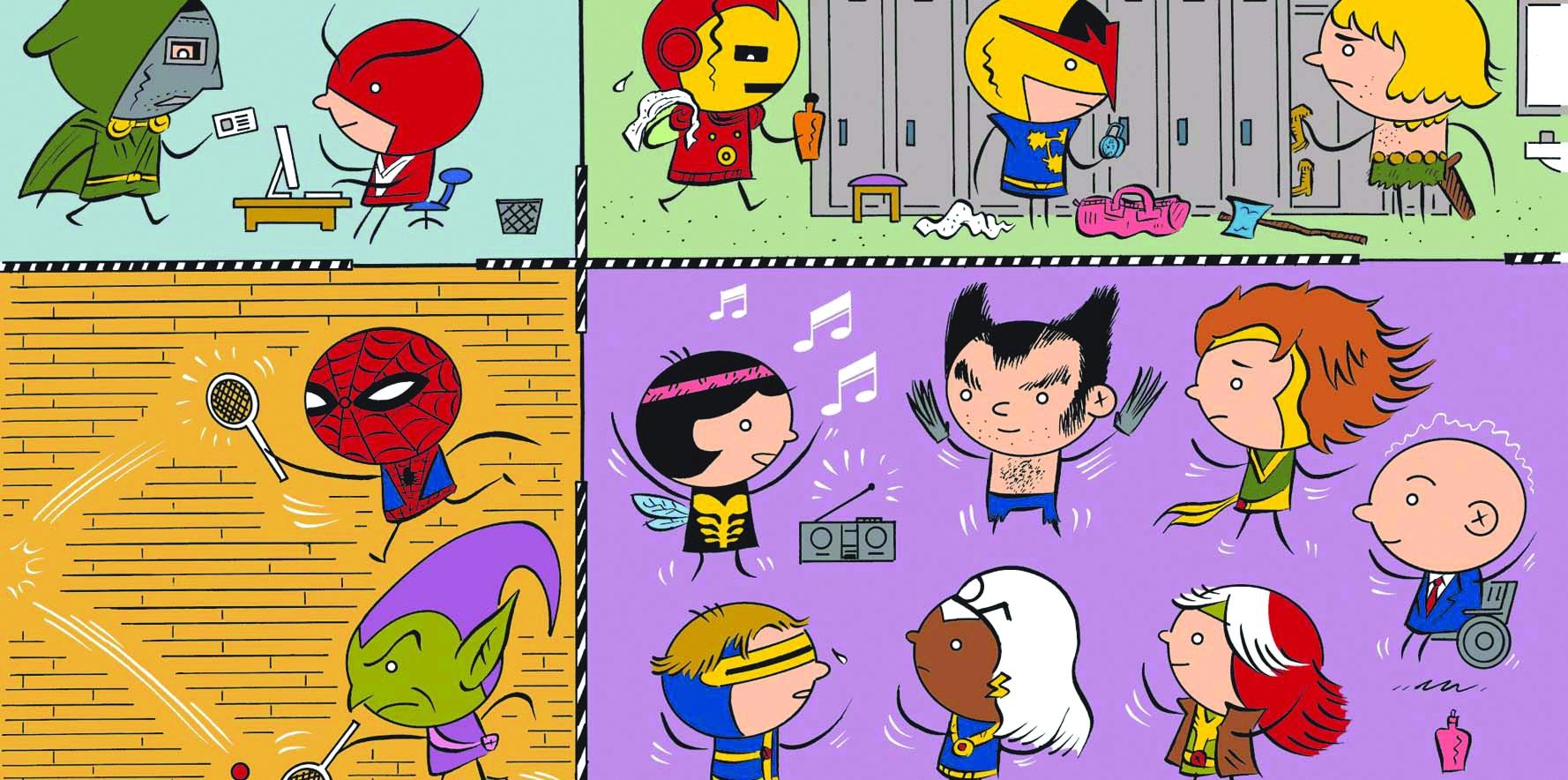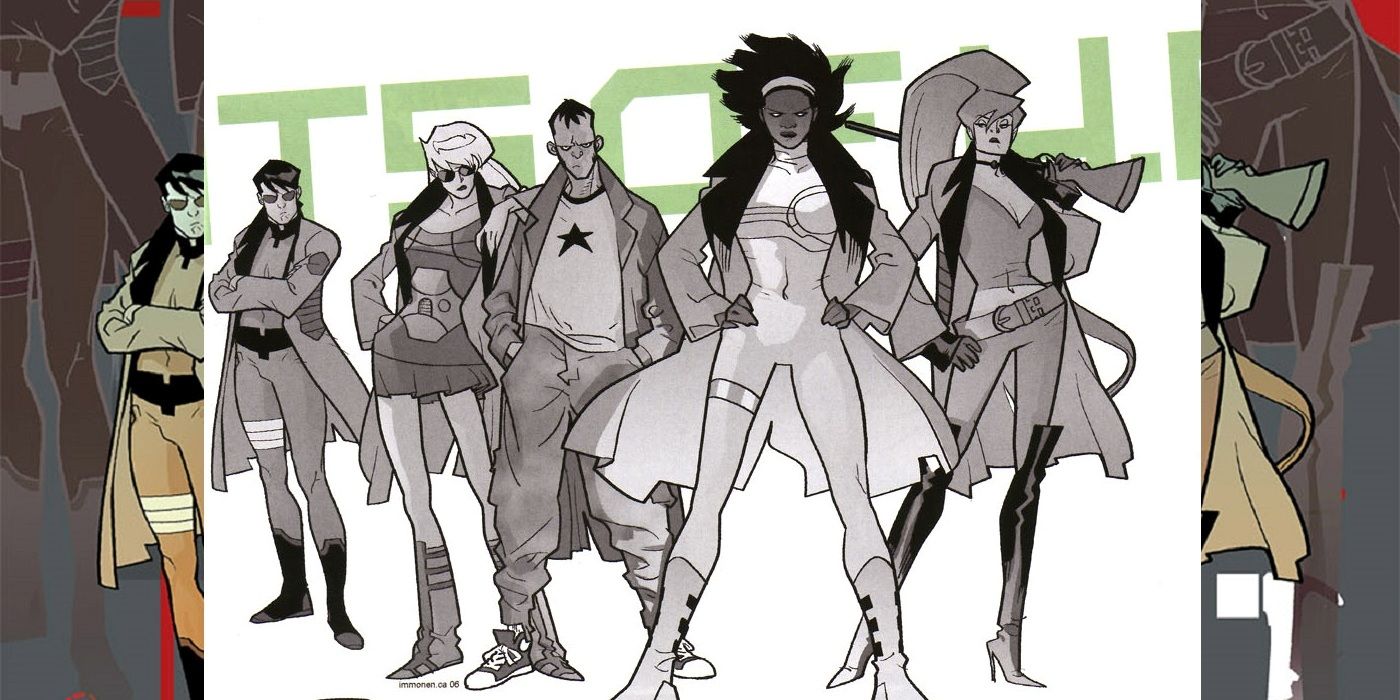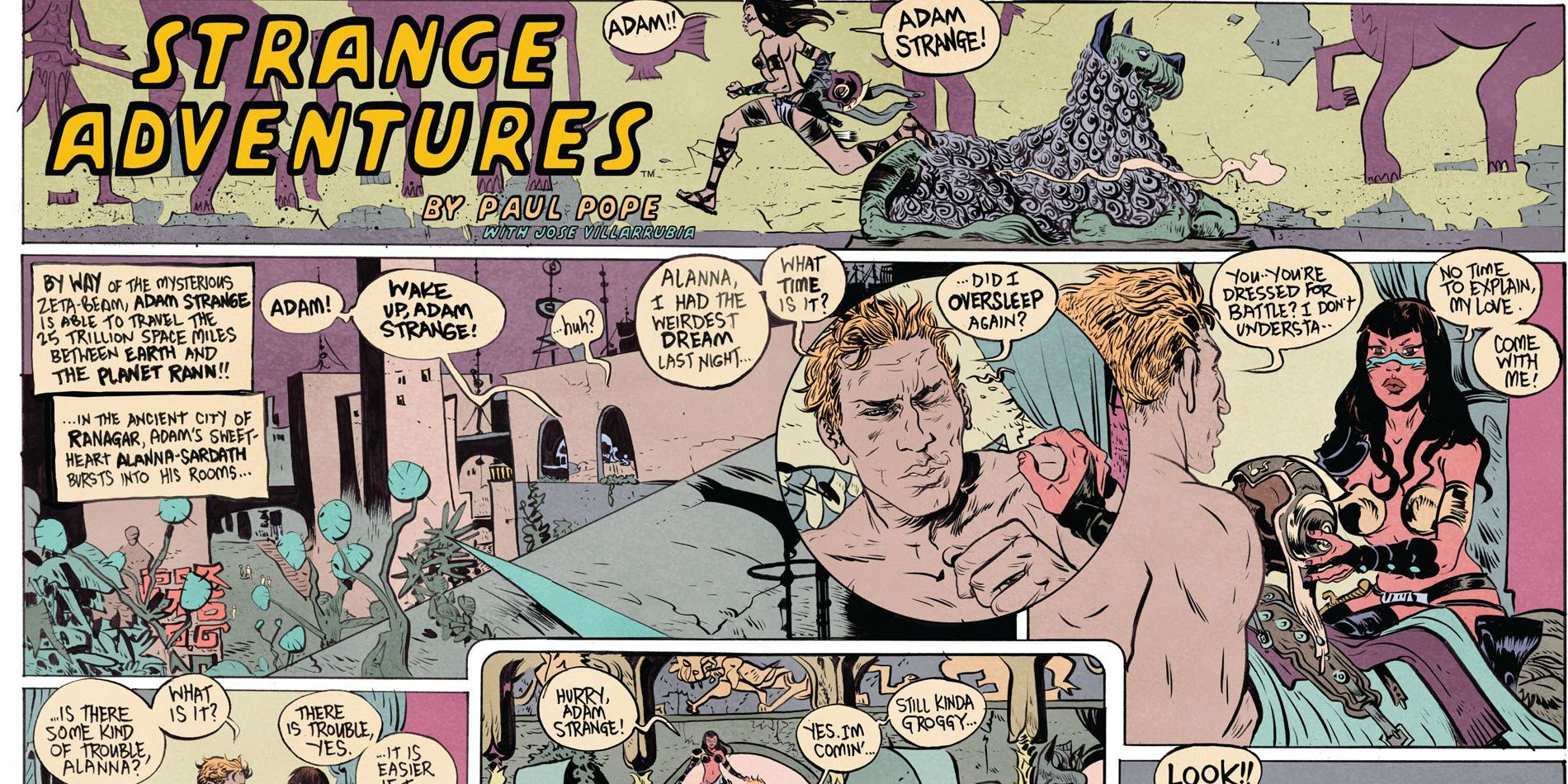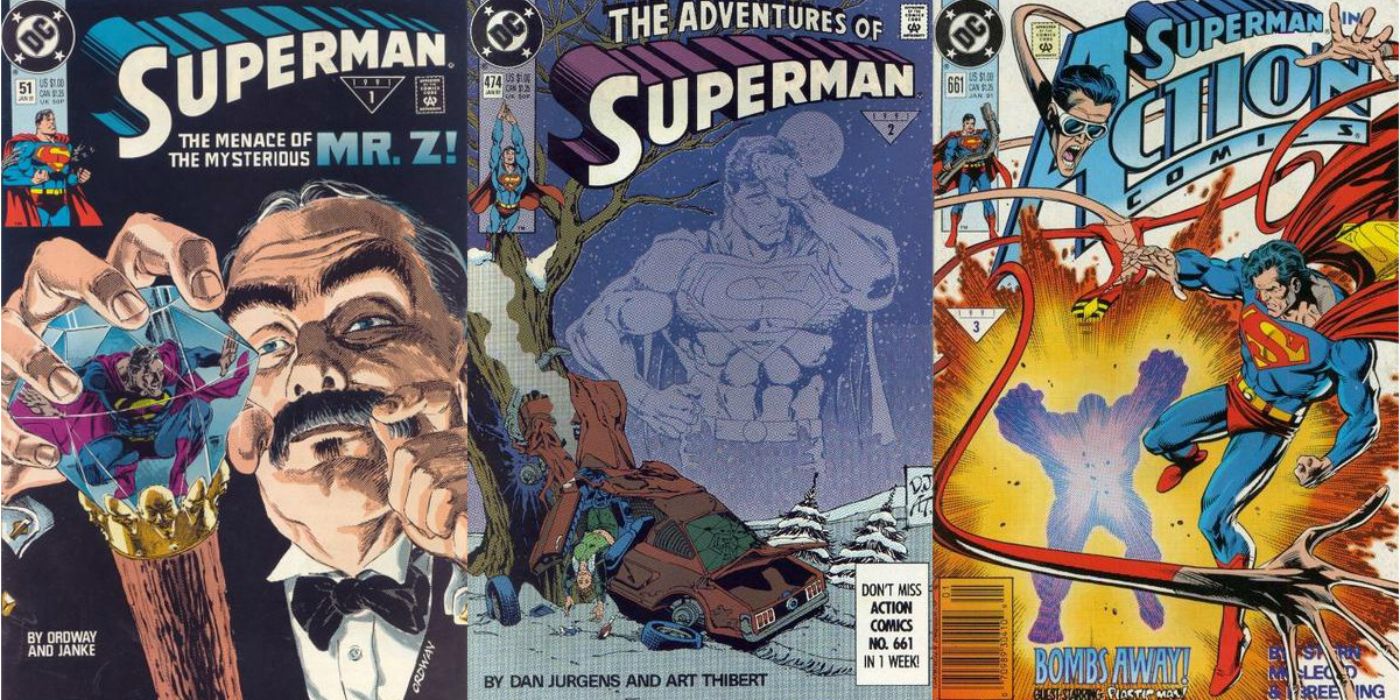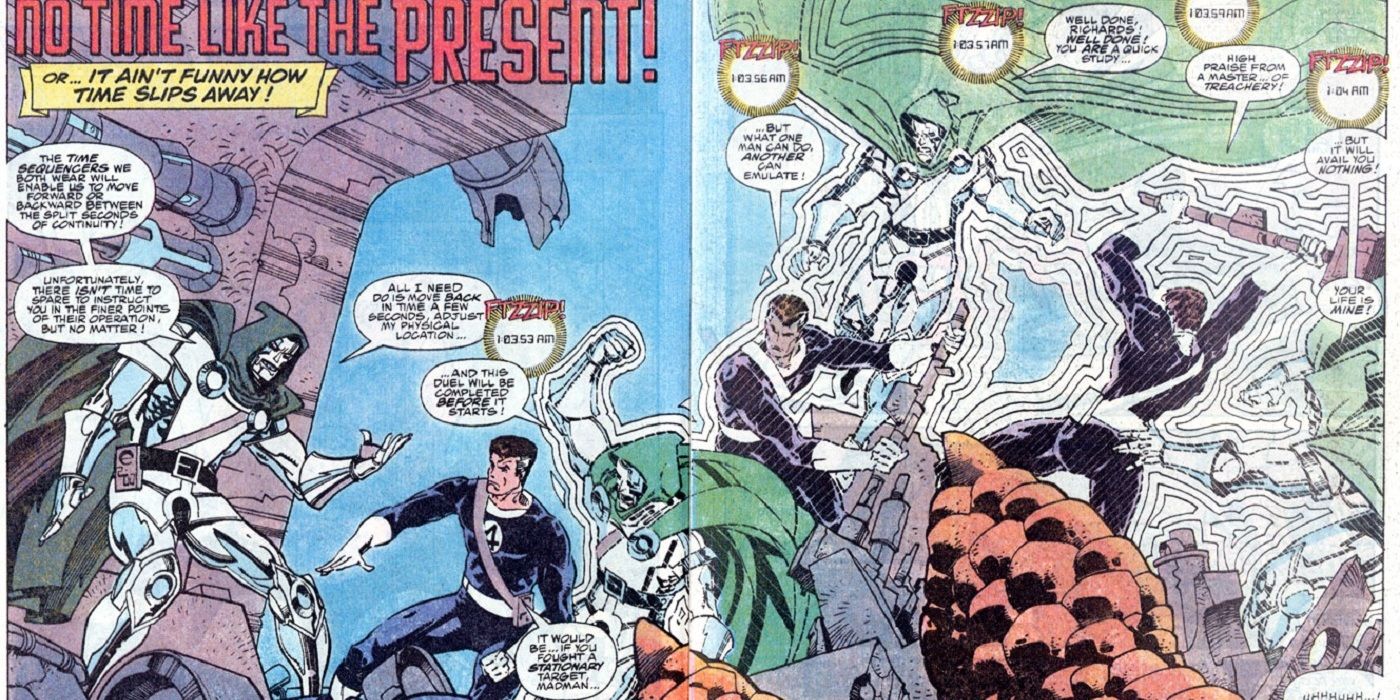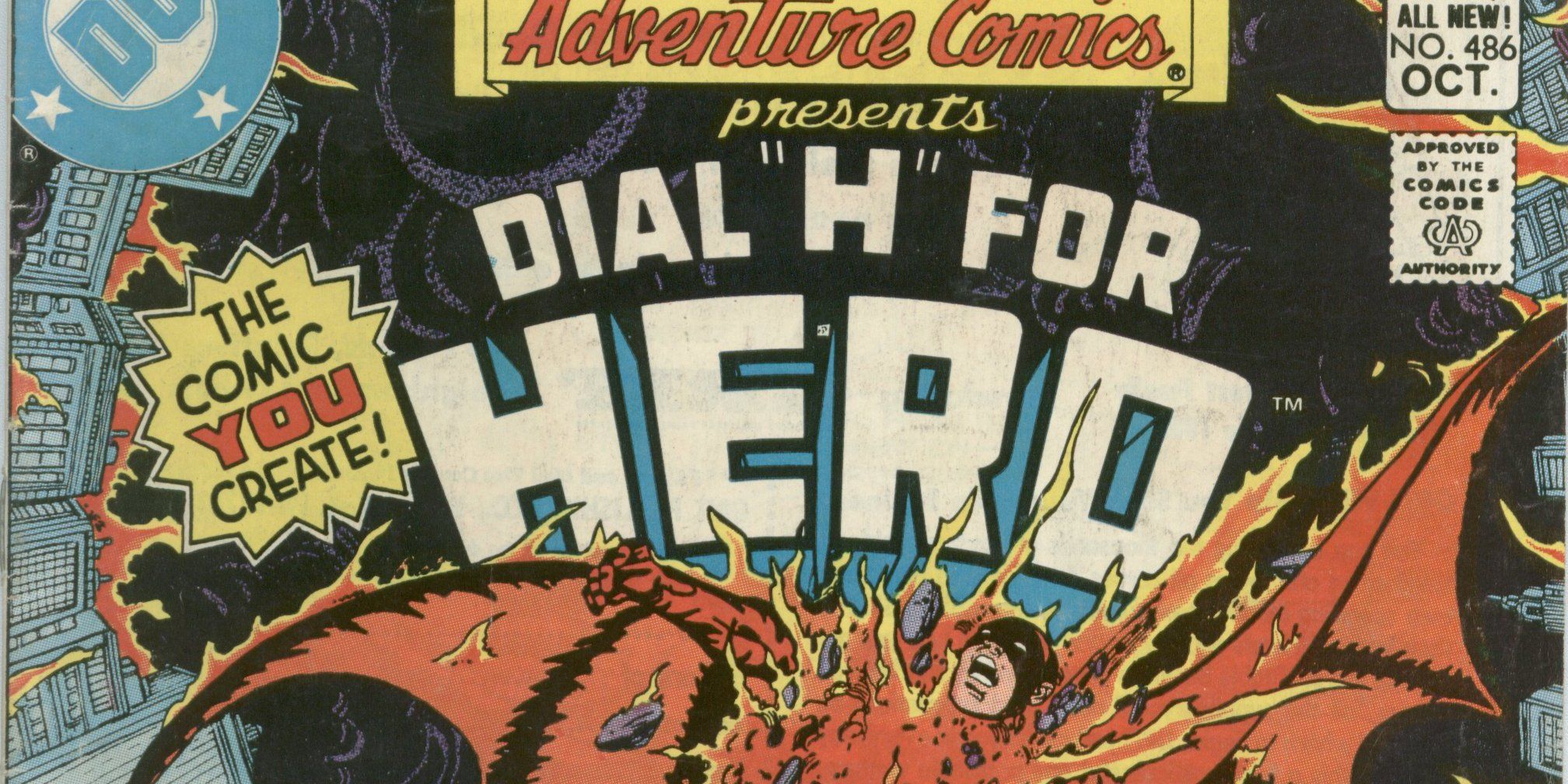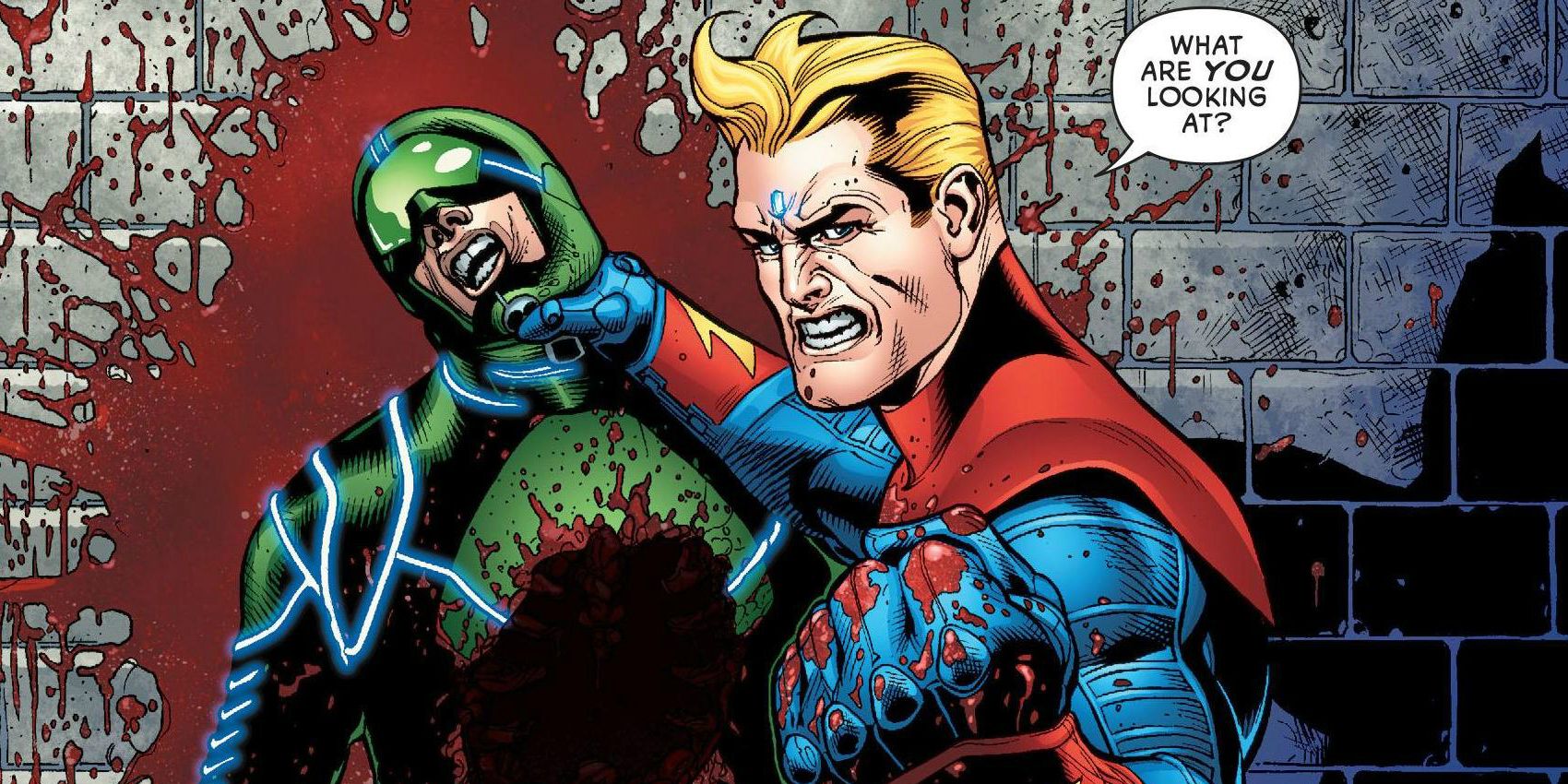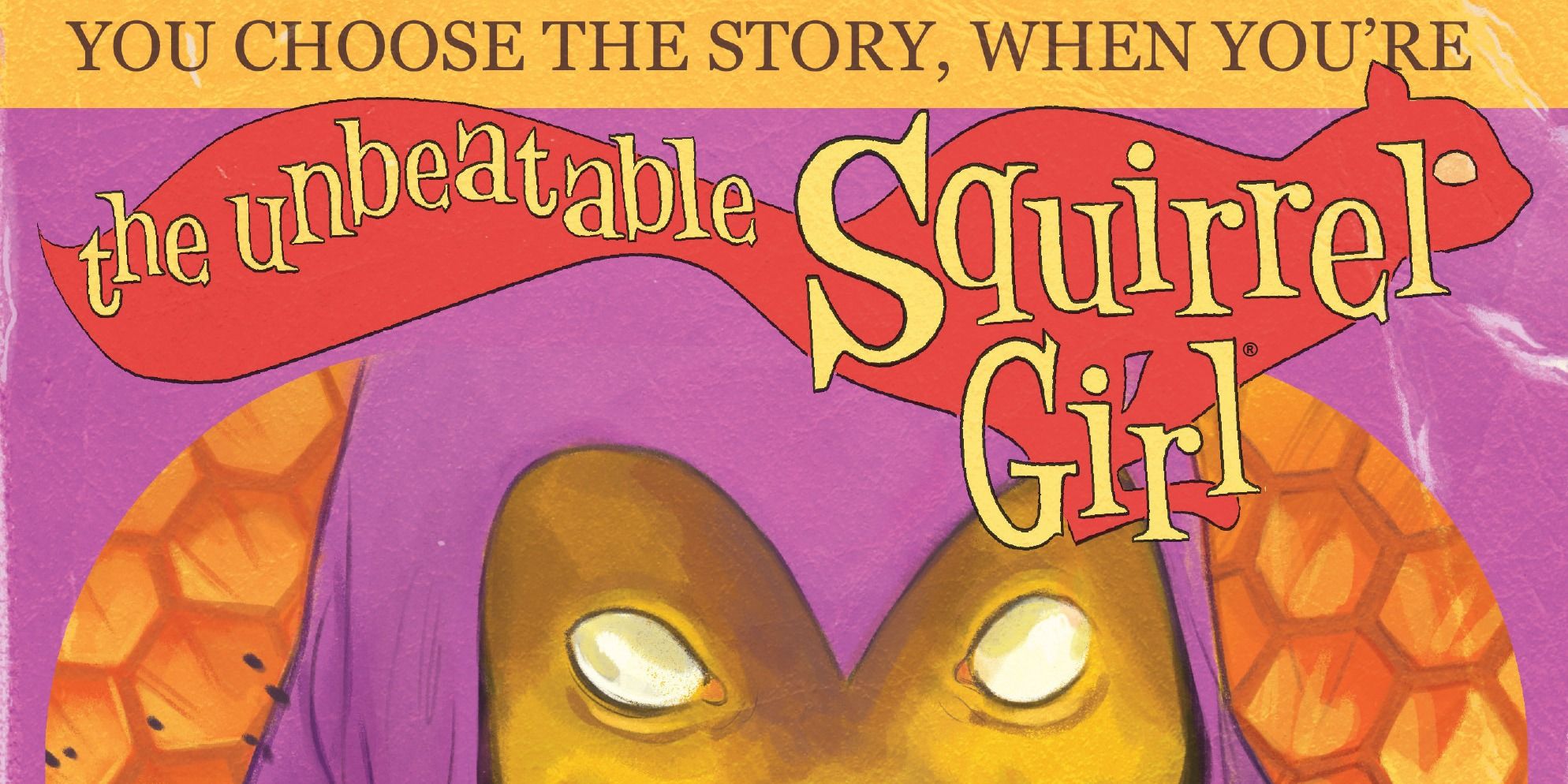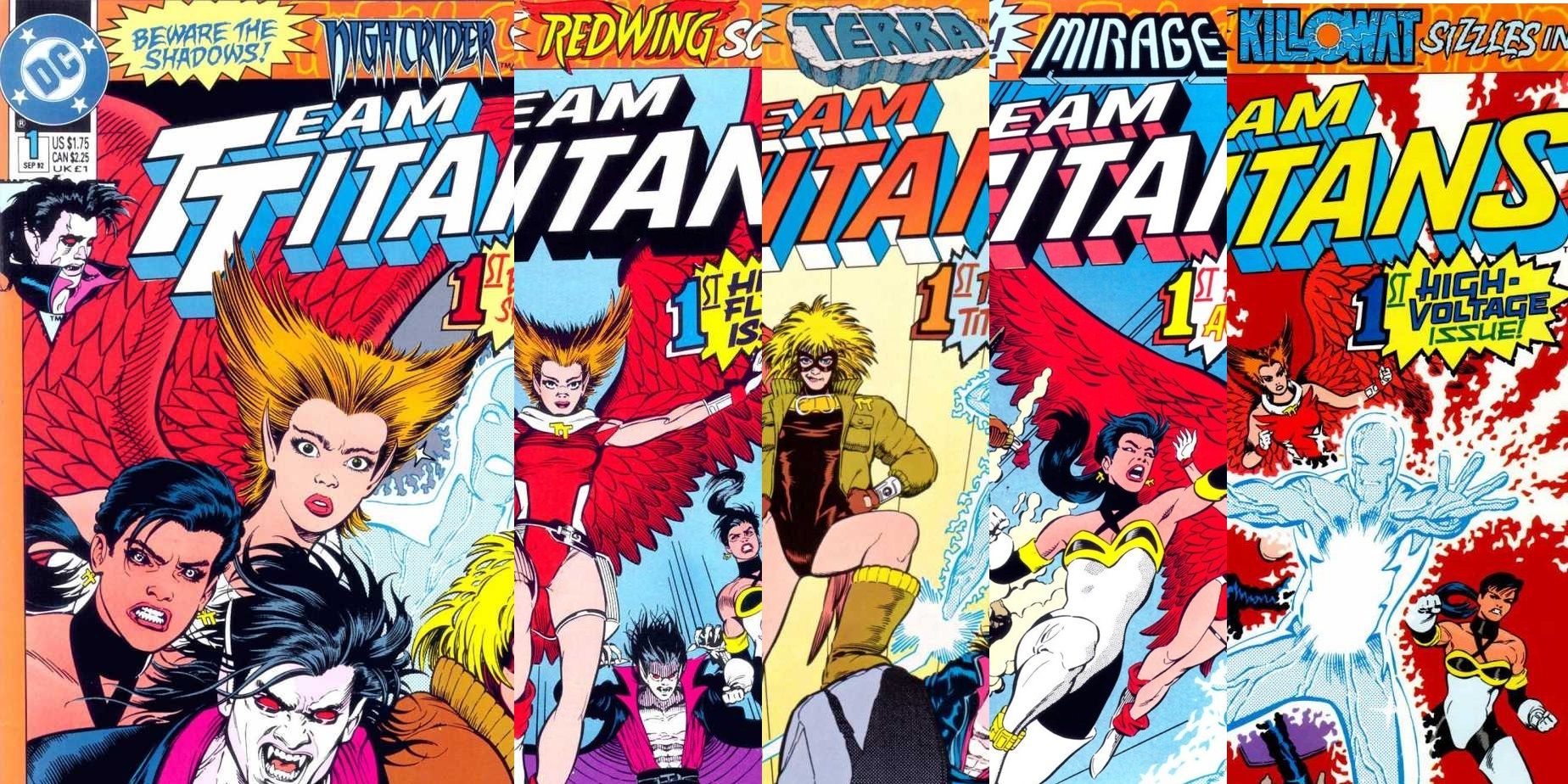Over their several decades of existence, American superhero comics have had to adapt to changing market conditions and changes in reader habits. Anthologies were more popular in the Golden Age but dwindled away as the Silver Age ended. Early Marvel superhero books incorporated continuing subplots to create super-soap operas, and DC naturally followed suit. Today, even as the individual issue with 20 story pages still dominates as the standard comic book format, many readers wait for collected editions.
RELATED: The 15 Weirdest Comic Book Swimsuit Specials
And yet, every now and then there are isolated instances of experimentation in which a publisher bends those dominant formats to either stretch storytelling possibilities or just to attract attention. Never mind the menagerie of 1990s-era cover gimmicks or the modern effects that digital and motion comics can achieve; good old-fashioned print had some surprising tricks. Today, as the "Kamandi Challenge" revives an old DC experiment, we look back (in no particular order) on some odd and unusual ways to present superhero stories.
15 ROCKIN' ROUND-ROBIN
If you think creative teams don't stick around as long as they used to, then you need to consider the round-robin format used in 1985-86's "DC Challenge" miniseries and currently in use by the "Kamandi Challenge." Each issue has a different creative team and the only real rule is to end on a cliffhanger for the next team to resolve. Notice that the rules don't include "tell a coherent story," because as much fun as the "DC Challenge" teams apparently had on each of their issues, boy-howdy was it hard to follow!
It started with Superman, Batman, Wonder Woman, Adam Strange and some demons in Mark Evanier and Gene Colan's "DC Challenge" #1, but before it was over, Nazis had won World War II, Superman had a red sun for a head and the JLA Satellite was full of confused super-people. Nevertheless, the round-robin can stretch the capabilities of both readers and creators, and it truly shows off comics' limitless potential.
14 A BIG DELIGHT
Likewise, we include the ubiquitous one-page Hostess Cupcake ads of the 1970s for the only rule they appeared to have: Make sure the product is the star. That was the point, of course; but for readers used to Batman and Daredevil fighting ninjas and serial murderers in their regular books, the ads were a bit jarring to read.
Although they featured even wilder plots than the regular comics (birds stealing the Statue of Liberty, for example) and used ultra-powerful characters like Green Lantern and Captain Mar-Vell, the day was always saved by the timely appearance of Twinkies, Hostess Cupcakes or Fruit Pies. Granted, who among us can resist rich chocolate taste and/or creamy filling. But the ads were so prevalent that, after a while, one got the impression that the Justice League and Avengers could have saved themselves a lot of trouble by stuffing the Anti-Monitor or Thanos full of sweet treats.
13 COMICS WITHIN COMICS
In the early 1980s, DC previewed new series with 16-page stories bound into the middle of selected single issues. The "Amethyst" preview was in "Legion of Super-Heroes" #294, "All-Star Squadron's" was in "JLA" #192, and a little series called "New Teen Titans" was first seen in the middle of "DC Comics Presents" #26.
These previews didn't have anything to do with the titles they appeared in, but later in the decade, "Bonus Book" inserts tied in more closely and featured up-and-coming talent. Today, the format is back, sort of, through "Dark Knight III's" bound-in mini-comics. Basically they're backup stories, but since they're physically in the middle of the issue, you have to get around them in order to finish reading the main story, and then circle back and hope you read everything in the right order. Whatever you do, though, don't risk your comics' value (or its staples) by removing the inserts.
12 HEARD ANY GOOD PICTURES LATELY?
Another staple of the 1970s, Power Records specialized in book-and-record sets where kids could read along with an audio dramatization. Along with superheroes, the label featured sci-fi franchises like "Star Trek" and "Planet of the Apes." While Power adapted existing issues, like September 1972's "Fantastic Four" #126, December 1973's "Captain America" #168 or January 1974's "Incredible Hulk" #171, Neal Adams' Continuity Studios also produced original stories for the label.
These included the Batman tales "Stacked Cards" and "Robin Meets Man-Bat" (reprinted in "Batman Illustrated By Neal Adams" volume 3); Superman stories by Cary Bates, Elliott S. Maggin and Ross Andru; and a 1976 Conan adventure by Len Wein, J.M. DeMatteis and John Buscema that was reprinted as November 1980's "Conan" #116. Although the novelty comes from hearing an actor screech like Man-Bat or roar like the Hulk, we imagine "writing for the record" is a skill set all its own.
11 NEXUS IN STEREO
Sometimes the soundtrack is part of the main series. "Nexus" was a superhero series set 500 years in the future, initially published under Capital Comics and now owned by Dark Horse. Writer Mike Baron and artist Steve Rude's independent sci-fi superhero classic started out as a magazine-sized black-and-white comic.
Bound into its third issue was a "flexi-disc" with the "Nexus" theme song (co-written by Baron) and an audio dramatization. An editorial explained the benefits: "The intonation of a character's voice, background music to set the mood and electrifying sound effects all add new depth and dimension to the printed words and art." While flexi-discs wouldn't be in every issue, the editorial promised "next time we do this it'll be even better." However, there was never to be a "next time," unfortunately, as the flexi-disc doesn't show up in reprints and there weren't any future issues that came accompanied with flex-discs to enjoy. However, "Nexus" turned out to be memorable enough without the audio accompaniment.
10 INDEPENDENT VOICES
Although it's not really a distinct format to pair mainstream, corporate-controlled characters with comics creators from more of an independent background, anthologies like the "Bizarro Comics" and "Strange Tales" series are often both entertaining and illuminating.
"Bizarro" allowed DC to reprint Kyle Baker's instant-classic "Letitia Lerner, Superman's Babysitter" and "Strange Tales" gave us Kate Beaton's take on Rogue and Kraven. Tom Scioli and John Barber's "Transformers vs. G.I. Joe" series, which merged the superfans' knowledge with their unique styles and filtered it through a '70s Jack Kirby lens, is also a good example of combining the best of both worlds. Of course, with the Internet, it's become easier than ever to find cartoonists' "unsanctioned" takes on superheroes, but the official sanctioning of a DC or Marvel anthology may sand down some rough edges. Still, the freedom these creators normally enjoy usually transfers pretty well, and we're all better for it.
9 NEXTWAVE EXTRAS
Warren Ellis and Stuart Immonen's 12-issue cult-classic "Nextwave" (2006-07) took shots at a lot of superhero-comics targets, but it also used some memorable gimmicks to grow an audience. Mixed into Fin Fang Foom's pants-related anger, the filthy half of the Captain's codename and Machine Man's contempt for fleshy ones was the "Nextwave" theme. So too were things like issue #5's "Crayon Butchery Variant."
Yes, quite a while before adult coloring books became a thing, "Nextwave" encouraged its readers to cast off the shackles of hues imposed from on high and color the issue themselves. Granted, this was a variant, so readers had to make an extra effort to get it. So unsurprisingly, the non-colored version of the issue hasn't been reprinted in any "Nextwave" collection. As a further incentive, though, Marvel conducted a coloring contest, and the winner's name (Matthew Keegan, whose entry can be seen here) was forever immortalized in said collections.
8 EASY LIKE SUNDAY MORNING
The 12-issue weekly "Wednesday Comics" was designed to emulate the classic comics pages of Sunday newspapers, when adventure strips like "Prince Valiant" and "The Phantom" got ample room for their Sunday-continuity installments (Feel free to ask your grandparents for more details.). Each issue of "Wednesday Comics" folded up into a standard 7" x 10" comic-book size, but opened into 15 gigantic 14" x 20" broadsheet pages.
The features included DC's A-listers as well as Kyle Baker's "Hawkman," Dave Gibbons and Ryan Sook's "Kamandi" and Paul Pope's "Adam Strange." Neil Gaiman and Mike Allred's "Metamorpho" even did two pages which combined to form the Periodic Table of the Elements. "USA Today" also published John Arcudi and Lee Bermejo's "Superman" strip. The collected edition is similarly impressive, and includes a "Plastic Man" short feature; but nothing beat the love-of-reading experience from picking up each issue as it came out.
7 EVENTS PUBLISHED IN REAL TIME
One series which demanded to be read as it came out was 2006-07's sequel to "Infinite Crisis," the year-long weekly "52." Since all of DC's ongoing superhero comics had gone through a one-year time-jump, only "52" chronicled the missing year. Its brain trust, which included writers Geoff Johns, Mark Waid, Grant Morrison and Greg Rucka, and layout artist Keith Giffen, further imposed a strict real-time rule that each issue would cover one week. The only cliffhanger involved one issue ending at 11:59 p.m. and the next starting at midnight.
The method was popular enough, with some fans reportedly waiting to read each day's events as they "happened," meaning a fan on a Tuesday would stop reading on when he or she reached the part of the issue dealing with a Wednesday. There had been real-time comics before (the "Batman: No Man's Land" epic played out over the course of a year, for example, from January to December 1999), but with elastic timelines a staple of superhero storytelling, "52's" adherence to its internal rules was both a clever gimmick and a steadying influence on its pacing.
6 TRIANGLE TIME
Some superheroes are simply too big for one book, but when a hero has multiple comics titles being published, those books don't necessarily have to flow together. When they do, however, the results can be quite engaging. In the early 1980s, Bat-writer Gerry Conway structured issues of "Batman" and "Detective Comics" so that "Detective" continued "Batman's" stories, and vice versa. The format ended with 1986's "Batman" #400, but not long afterwards the three Superman books ("Action Comics," "Adventures of Superman" and "Superman") picked it up.
To keep everything straight, the Super-titles put the reading order in a little triangle on each issue's cover. It lasted about 10 years, before including the addition of a new monthly series ("Man of Steel"), as well as incorporating a new quarterly book ("Man of Tomorrow") for the months that had five Wednesdays in them. It could be overwhelming at times, but the four series combined to tell some true epics, including the "Death of Superman," "Funeral For A Friend" and "Return of Superman" story arcs.
5 PAGE-HOPPING
We've already talked about comics within comics, but Walt Simonson's "Fantastic Four" #352 (May 1991) presented a story within a story, and the "inner" story was out of sync with the "outer" one! The main ("outer") story involved Doctor Doom, Ben Grimm reverting back to the Thing, and Ben's girlfriend Sharon Ventura giving up her own career as the Thing in her absence.
Doom had captured the FF and challenged Reed Richards to a duel using time-jumping devices. Their fight, which was waged across increments of minutes and seconds, was the "inner" story, and it unfolded in out-of-sequence vertical panels that ran alongside the in-sequence main story. Readers had to follow the timecodes in both stories in order to keep everything in order, and could check their work with the occasional panel where the two timelines intersected. It was a great use of single-issue real estate and the kind of innovative technique "FF" helped pioneer.
4 DIAL "R" FOR READER
Created by Dave Wood and Jim Mooney for January 1966's "House of Mystery" #156, "Dial H For HERO" was one of Silver Age DC's crazier concepts. It involved a magic "H-Dial" which would turn its owner into a randomly-generated superhero and, more often than not, a one-off character created specifically for the story.
The feature ran until issue #173 (March-April 1968) but was revived in February 1981 via a special insert (remember those?) in "Legion of Super-Heroes" #272. (It then moved to "Adventure Comics" and was a backup in "Superboy.") This time, writer Marv Wolfman and artist Carmine Infantino's gimmick was using characters submitted by readers, who both received credit for the idea and had a T-shirt sent to them in exchange for their intellectual property. While it was probably a time-saver for the creative team, no doubt they also wracked their brains trying to figure out how to work Lawnmower Lass, or whomever, into the stories.
3 THIS COMIC CAN KILL YOU
In "Animal Man," Grant Morrison famously broke the fourth wall to introduce himself to the main character, Buddy Baker. Over 20 years later, Morrison would revisit the idea of characters addressing the reader directly in his "Multiversity" miniseries, especially in the "Ultra Comics" one-shot, which was an installment about a character named Ultra from the "real world" of Earth-33, who was a comic book come to life.
In other words, "Ultra Comics" was about itself, and by reading the issue, readers participated in the character's life, including his birth and (very short) career. At the end of the issue, Ultra sacrificed himself by trapping his foe within the pages of the comic, begging readers not to let it out. To that point, "Multiversity" was already pretty meta-textual, so "Ultra Comics" was over the top on a number of levels. Nevertheless, the reader-participation angle gave the miniseries an entirely new dimension.
2 CHOOSE YOUR OWN ADVENTURE COMICS
One of the many tools in Ryan North's utility belt is a knack for choose-your-own-adventure storytelling. Besides his great mostly-prose Shakespeare adaptations ("To Be Or Not To Be" and "Romeo And/Or Juliet"), he's also written a couple of chooseable-path comics. In November 2012's "Adventure Time" #10, he and artist Shelli Paroline crafted a labyrinthine tale about the Ice King putting our heroes under the control of a mysterious force (guess who) which got more and more twisted as the issue played out. The ending even depended on the sheer number of options the story eventually encompassed.
More recently, in June 2016's "Unbeatable Squirrel Girl" #7, North and artist Erica Henderson allowed the reader to guide Squirrel Girl to victory against Quoggoth, Swarm, and/or Doctor Yes, with Galactus himself as your host. Chooseable-path comics aren't new (see "The Unwritten" #17, for example) but North has brought them back into the limelight and made them a one-man trend.
1 TITANS SEPARATELY
Superhero comics of the early '90s get well-deserved attention for the cover-enhancement craze. Therefore, to stand out from all the chromium and foil, DC promoted September 1992's first issue of "Team Titans" with -- wait for it -- alternate interiors. That's right, not only did "Team Titans" #1 feature variant covers for each of the five Titans, each variant also included the 18-page origin of its cover-featured hero.
Accordingly, if you wanted to get the whole story, you had to buy five different issues (all of which were written by Marv Wolfman). That was overkill, since the variants all shared the same 22-page main story; and on top of that, the main story was Part 3 of a Titans-franchise crossover! Those of you doing the math will realize that if you bought all five variants, you got 4 extra copies of Part 3 of the crossover. Needless to say, DC decided to keep the variants on the covers only from then on.
Got a favorite storytelling strategy or comic book gimmick? Tell us in the comments!

